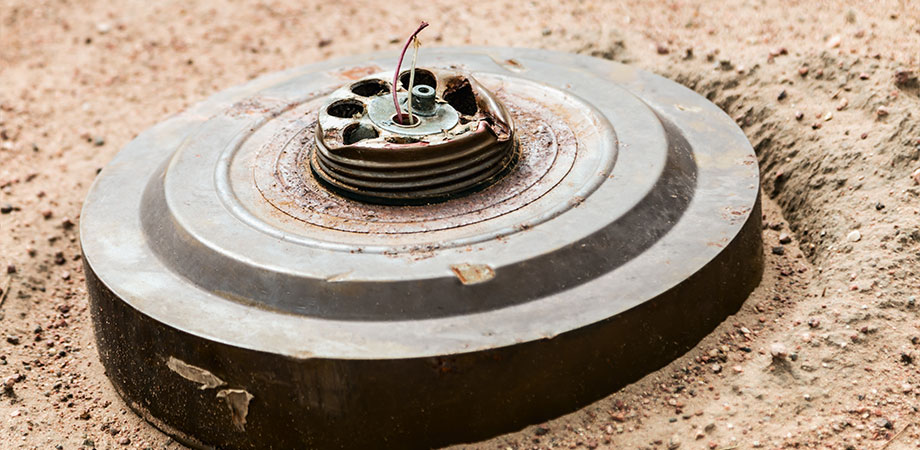Raman scattering spectroscopy for explosives identification

Raman spectroscopy (RS) has become increasingly important to homeland defense.1,2 It identifies potential explosives by detecting changes of vibrational energy level states in response to laser illumination, providing a repeatable spectral response. Chemical bond vibrations within the molecule furnish a ‘fingerprint’ based both on the composition of materials and the molecular structure of each constituent.
The main problem for RS testing applications is that so-called Rayleigh scattering can in many cases mask the weaker Raman signal. Intensity may be enhanced using UV excitation, due to the wavelength dependence of the Raman cross-section. Still greater enhancement is available in the vicinity of allowed electronic transitions.3–5 Relatively deep UV excitation (shorter than 250nm) also strongly diminishes Raman signal overlap with luminescence owing to the spectral proximity to the excitation wavelength. In many cases Raman lines fall into the spectral range where the Stocks shift, or significant energy difference between emission and absorption, is practically absent. When the resonance or preresonance condition is satisfied, the cross-section is enhanced. In addition, the spectrum is simplified because only vibrational modes coupled to the resonant transition wavelength result in enhanced cross-sections.
Our experiments, carried out at Laser Ditect Systems laboratories, employed the prototype of a gated Raman spectrometer and used an eye-safe UV laser. We demonstrated that absolute Raman cross-sections of explosives (measured as cm2/molecule−1 sr−1) are 100–200 times greater than those discovered using visible excitation.6 Even trace amounts of explosive residues produce measurable Raman-scattered light. Indeed, we have detected them against most common background materials, including metals, glass, cloth, wood, paint, and soil. Contaminated fingerprints containing as little as 100ng to 1μg of these compounds have been picked up using this sensor.
RS provides a means for standoff detection and identification of explosive traces at any line-of-sight orientation relative to the sensor's laser source. We have successfully completed a remote scan field prototype system that targets submilligram quantities of the compounds at distances of up to 30m.7 Scattered light from a pulsed green laser (532nm), reflected from the relevant surface, is optically collected and analyzed with a gated spectrometer, then compared with the recorded spectral signatures of all known explosives. A match generates an alert to the operator indicating the presence of residues. Calculations show that UV standoff Raman detection constitutes a substantial improvement over visible excitation.
Because detection is based on the unique molecular structure of the targeted compounds, the risk of false positives is almost nil. The Raman approach is able to identify compounds undetectible by ion mobility spectrometry8 and dog scent methods, including very low vapor pressure compounds. In addition, the spectral library of identifiable materials may be quickly updated as new substances are developed, including such homemade explosives as were used in the 2005 London subway bombings. In extreme cases the use of additional technologies, such as UV-excited time-resolved luminescence, assists in successfully identifying the analyzed material.7
In summary, we have been able to determine the optimal excitation source and the necessary parameters for constructing a Raman light detection and ranging instrument that combines UV-excited RS with laser-induced luminescence spectroscopy. Unlike laser-induced breakdown spectroscopy, it uses an eye-safe laser source that will not damage the surfaces being scanned. This technology offers compelling advantages for use in detecting IEDs.
Lev Nagli received his PhD in solid-state physics in 1971 and, in 1988, a doctorate from the Institute of Physics, Latvian Academy of Science, where he served on staff for 25 years. He is currently principal research associate in the School of Physics and Astronomy, Tel Aviv University, and a consultant for LDS. His research interests include optical spectroscopy, laser materials, and infrared spectroscopy.



